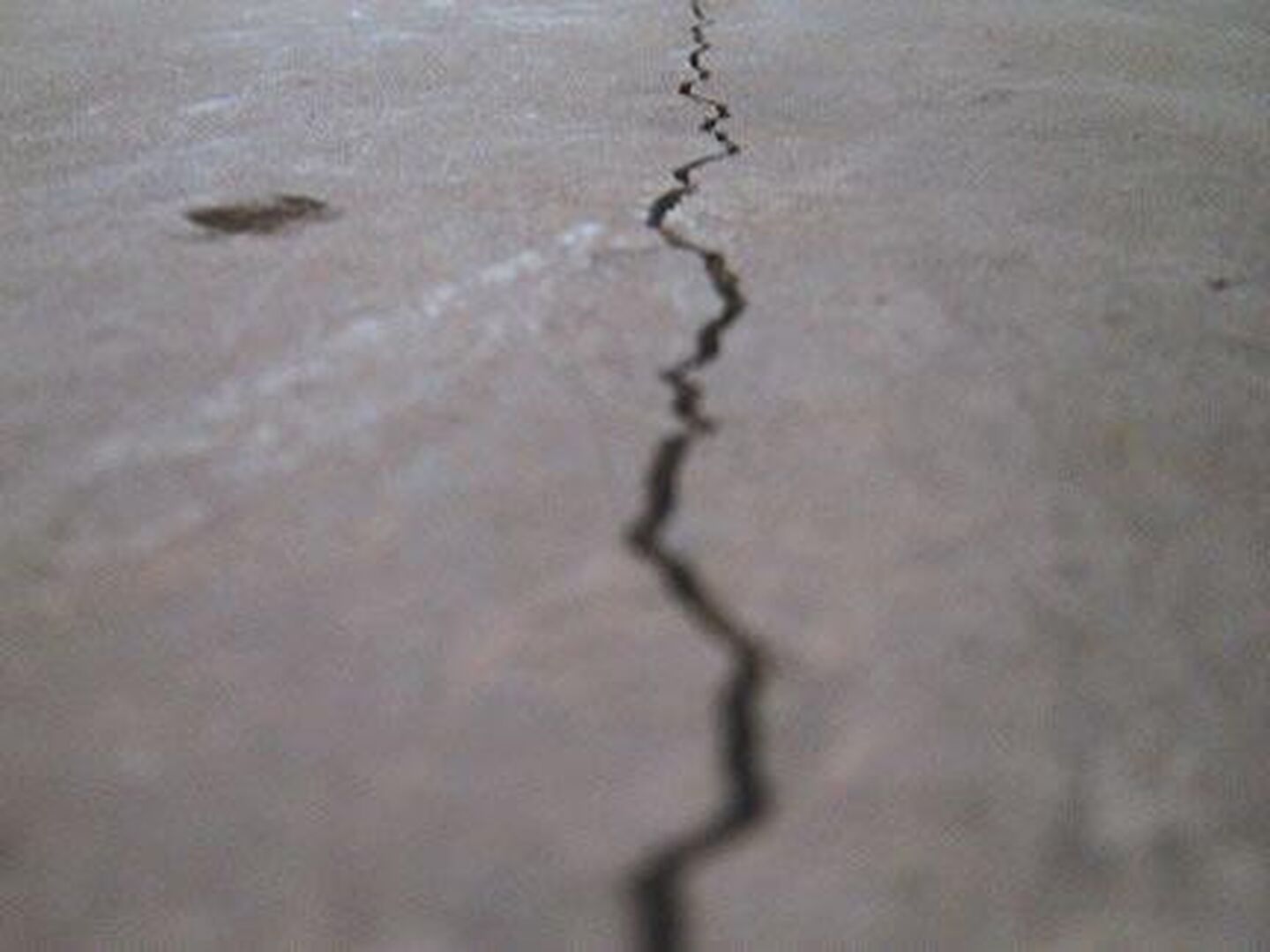How to Fix a Basement Wall Crack

There’s a little puddle on the basement floor. That’s not good.
Trace that puddle back to its origins and the source turns out to be an unnoticed crack in the poured concrete wall. That’s not good, either. But how bad is it?
If the crack is wide (more than 1/8”) it could be a sign of serious structural foundation damage. If, like the majority of wall cracks, it’s narrow and relatively short, it’s not a structural problem but will be a continuing source of seepage until it is repaired.
So, what’s the best way to repair a non-structural crack in a basement wall?
How to Fix a Basement Wall Crack
The most common source of water in a poured concrete basement is a wall crack. These cracks can occur from foundation settling or from lateral pressure from saturated soil outside the foundation. Regardless of their cause, repairing a crack is one of the least-disruptive and cost-effective methods of basement waterproofing.
Fixing a Crack from Inside
The best way to fix a seeping wall crack is from inside the basement using the polyurethane injection process.
The basement waterproofing technician begins the repair by cleaning out the crack and removing any loose cement or aggregate. Once the crack is clean, he then places a number of plastic injection ports, small plastic tubes, into the crack at regular intervals.
After the injection ports are in place the technician applies a coat of fast-curing epoxy to the wall over the crack. This secures the injection ports in place and creates a “lid” over the crack to contain the sealer.
Once the epoxy has cured, the technician injects the crack through each port with expanding polyurethane. The polyurethane not only completely fills and seals the crack but, because the expansion pushes it all the way through the wall, it actually creates a positive seal on the exterior of the foundation.
Polyurethane has become the overwhelmingly preferred material by basement waterproofing professionals because it remains flexible after it has cured, preventing the crack from re-opening that could be caused by minor foundation movement. Most basement waterproofing companies offer a lifetime warranty on cracks repaired with expanding polyurethane.
The technician will trim off the injection ports. If the homeowner wishes to smooth out the wall, the epoxy surface sealer can be easily removed with a chisel.
Fixing a Crack from Outside
In a home with a finished basement a homeowner may not want to remove walls to access a seeping crack. Similarly, if the crack is in an inaccessible spot, behind a furnace perhaps, there’s just no way to do a polyurethane injection.
In cases like these, the crack can be repaired from the outside using a traditional, safe and time-tested method and material. The technician begins the repair by digging a small hole against the foundation at the site of the crack. The hole will extend to the foundation footings.
The hole is then filled with granular sodium bentonite clay, which quickly absorbs water from the surrounding soil and expands to become a pliable but impermeable barrier against water infiltration. The remaining part of the hole is backfilled and the repair is invisible.
No matter which method is recommended for repairing a particular seeping wall crack, the affected homeowner will require the advice and services of a basement waterproofing company that offers both. At U.S. Waterproofing, we started our business in 1957 by repairing wall cracks from the exterior and have grown into one of the country’s largest full-service basement waterproofing and foundation repair contractors. Why not ask for our free advice?




